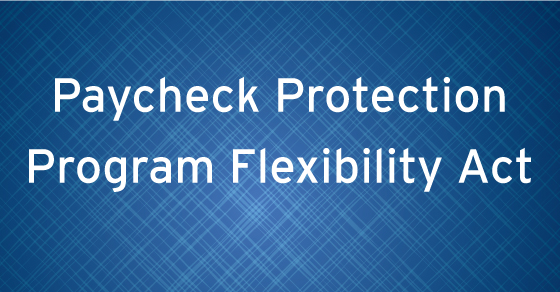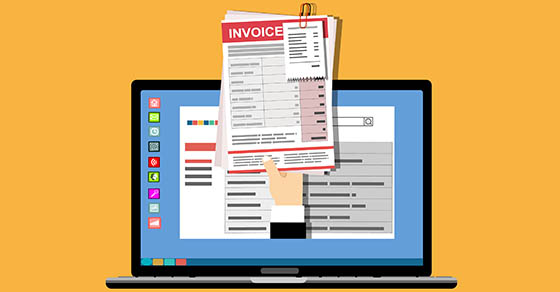In yet another attempt to clarify and expand the Paycheck Protection Program (PPP), Congress passed and on June 5, 2020 the President signed the Paycheck Protection Program Flexibility Act (PPPFA).
As you are aware, the changes/updates/clarifications to this program have been a constant. The analogy we have used is that we are trying to drive a car that has only been through 50% of the assembly process. It is being built on the fly….
PPPFA is very favorable to borrowers using the PPP as it expands several key areas that may enable businesses to more easily qualify for loan forgiveness. It certainly seems to be the intent of Congress to make this program as business friendly as possible. The main aspects of the PPPFA are as follows:
PPPFA reduces the amount necessary to be spent on payroll costs for forgiveness to 60%
When SBA issued its initial “Interim Final Rule” one of the surprises was the 75%-25% (payroll costs vs other costs) stipulation that only allowed 25% of the total amount of loan forgiveness to be for expenses other than payroll costs. The program was somewhat limited for those businesses that were unable to resume operations or whose significant costs in running their businesses weren’t payroll related.
The PPPFA increases the amount that can be forgiven for non-payroll costs to 40% from 25%. What this means is that if your payroll cost for forgiveness purposes is $100,000 a business could have up to $166,667 of a PPP loan forgiven. This amount would be payroll costs of $100,000 and other non-payroll costs of $66,667. Under the old 75%-25% rule, the maximum amount of other non-payroll costs that could be forgiven would have been $33,334, so this is a significant change to the PPP in the forgiveness for non-payroll costs.
In typical Congressional fashion, the Senate noticed that there was a drafting error in the House bill that reflected this change to 60% payroll costs. In the name of expediency, the Senate passed the law anyway with the understanding that the required technical tweaks would be made to the law to reflect Congressional intent. We won’t bore you further with the technical details as everyone in DC understands the error and there is bipartisan support to fix it. We just mention it to provide some background.
PPPFA extends the period to use PPP funds to 24 weeks
One of the concerns with a PPP loan was that the funds received had to be spent within an 8-week period beginning on the date that the PPP loan was funded. For businesses that were under governmental shut down orders or were operating on a limited basis it could be difficult to spend the funds during this short window. The business had little if any control of the time frame that would make sense for it to “start the 8-week clock”.
The PPPFA extends the 8-week period to spend the PPP funds to 24 weeks. This provides breathing room for businesses to manage their operations so that they should be able to achieve a significantly greater amount of loan forgiveness.
Remember that the PPP loan itself was based on 10 weeks of payroll costs, so spending the funds within a 24-week window should be much easier to do. This also significantly reduces the risks in pushing the envelope on forgivable expenses since businesses can wait a few extra weeks of payroll as necessary to maximize the forgiveness. It also makes some of the other calculation issues (paid or accrued) somewhat a moot point since the spend period has been lengthened to 24 weeks.
Note that although the business does have flexibility with the 24-week spend period, a business is not required to wait until the end of the 24-week period to apply for forgiveness. The business can apply for forgiveness after its 8-week period. It might make sense to do so if the business is satisfied with their level of calculated forgiveness after that period.
PPPFA relaxes employee rehire requirements
As part of the loan forgiveness calculation, it was important to keep the same number of employees and salaries to enable more of the PPP loan to be forgiven. The key date to look at in terms of full-time equivalents (FTEs) was June 30, 2020 under the old rules. The way the Covid-19 pandemic affected business operations has affected a business’ ability to bring back the number of people by June 30, 2020. The only exception to this rule was that an employer could remove an employee that refused a written offer to return to work from its FTE calculation.
The PPPFA extends the rehire date to December 31, 2020 and states that a business can still receive forgiveness on payroll amounts if a) is unable to rehire an individual who was an employee of the eligible recipient on or before February 15, 2020, b) is able to demonstrate an inability to hire similarly qualified employees on or before December 31, 2020 or is c) able to demonstrate an inability to return to the same level of business activity as such business was operating at prior to February 15, 2020.
There is a lot to unpack with these new rules and certainly introduces another layer of subjectivity into the equation. We expect that more guidance will be provided by SBA/Treasury on how these new requirements will be documented and incorporated into the forgiveness calculations. There will be yet another round of “loan forgiveness calculators” interpreting Congressional intent.
PPPFA changes term of loan and repayment timing
The CARES Act that created the PPP allowed for loan periods for amounts not forgiven, not to exceed 10 years and the cap on the interest rate was 4%. The actual PPP loan terms as originally released by SBA were a 2-year loan period with an interest rate of 1%. The PPP loan also allowed for a 6-month deferral of payments.
For new PPP loans, the PPPFA requires a loan maturity of 5 years and a deferral of all payment of principal, interest and fees until the date on which the amount of the loan forgiven is remitted to the lender by SBA. It is possible that the first payment on any non-forgiven amount wouldn’t be due until May 2021.
For existing PPP loans, the extension of the loan term from 2 years to 5 can also apply if both the lender and borrower agree.
Deferral of employer portion of payroll taxes
The CARES Act allowed for employers to defer the payment of the employer portion of Social Security taxes so that 50% would be paid by December 31, 2021 and 50% would be paid by December 31, 2020. However, this payroll tax deferral was not available for those businesses with loan forgiveness under the PPP.
The PPPFA allows borrowers receiving loan forgiveness to utilize the CARES Act payroll tax deferral provision.
The PPPFA certainly addresses many of business concerns that have been expressed since the CARES Act was enacted. However, it seems as though every new piece of legislation brings additional questions. The PPPFA is no different in that regard. We expect to see additional guidance regarding the practical application of some of the aspects of the PPPFA. However, with the first of the PPP loans at or near the end of their 8-week periods, at least the extension of the spend period to 24 weeks alleviates some of the immediate need for answers.
If you have any questions concerning the Paycheck Protection Program Flexibility Act, please contact your Maillie representative via phone or email.





